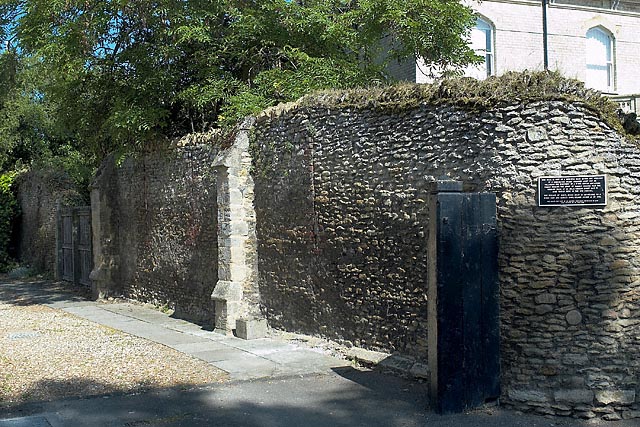Ivo Of Ramsey on:
[Wikipedia]
[Google]
[Amazon]
Saint Ivo (also known as Ives) was a Cornish
 The
The
bishop
A bishop is an ordained clergy member who is entrusted with a position of authority and oversight in a religious institution.
In Christianity, bishops are normally responsible for the governance of dioceses. The role or office of bishop is ca ...
and hermit
A hermit, also known as an eremite (adjectival form: hermitic or eremitic) or solitary, is a person who lives in seclusion. Eremitism plays a role in a variety of religions.
Description
In Christianity, the term was originally applied to a Ch ...
, and became the eponymous
An eponym is a person, a place, or a thing after whom or which someone or something is, or is believed to be, named. The adjectives which are derived from the word eponym include ''eponymous'' and ''eponymic''.
Usage of the word
The term ''epon ...
saint
In religious belief, a saint is a person who is recognized as having an exceptional degree of Q-D-Š, holiness, likeness, or closeness to God. However, the use of the term ''saint'' depends on the context and Christian denomination, denominat ...
of St Ives, Huntingdonshire.
History
The discovery of Bishop Ivo's remains in 1001 was first mentioned briefly in John of Worcester's ''Chronicon ex chronicis''. He appears in the historical sources in 1001/2 when a peasant allegedly found his coffin while ploughing at Slepe (later renamed St. Ives).Blair, "Handlist", p. 541 The body appeared to be invested with the insignia of a bishop. According to an account byGoscelin
Goscelin of Saint-Bertin (or Goscelin of Canterbury, born c. 1040, died in or after 1106) was a Benedictine hagiographical writer. He was a Fleming or Brabantian by birth and became a monk of St Bertin's at Saint-Omer before travelling to Englan ...
of St Bertin, St. Ivo appeared to the ploughman in several visions, which obliged him to communicate the discovery to the abbot's reeve. The latter did not take this seriously at first, whereupon the saint also appeared to him in visions. When the monastic community learned of this, they rejoiced greatly at the discovery.
 The
The Abbot of Ramsey
Ramsey Abbey was a Order of Saint Benedict, Benedictine abbey in Ramsey, Cambridgeshire, Ramsey, Huntingdonshire (now part of Cambridgeshire), England. It was founded about AD 969 and Dissolution of the Monasteries, dissolved in 1539.
The site ...
, Eadnoth the Younger
Eadnoth the Younger or Eadnoth I was a medieval monk and prelate, successively Abbot of Ramsey and Bishop of Dorchester. From a prominent family of priests in the Fens, he was related to Oswald, Bishop of Worcester, Archbishop of York and found ...
, built a church in Ivo's honor near the site. The neighboring village with market rights was renamed St Ives. On 24 April 1002, Abbot Eadnoth translated Ivo's body, along with two of his companions, to the mother house at Ramsey. Thanks to an endowment by Earl Adelmus, the church was expanded in 1017 into a Benedictine priory dependent on Ramsey, providing Slepe as well as part of Elsworth
Elsworth is a village and civil parish in South Cambridgeshire, England, 9 miles northwest of Cambridge and 7 miles southeast of Huntingdon. At the 2011 census, the population was 726.
It was one of only two sites in Cambridgeshire to be cover ...
and Knapworth as endowment.Hart, "Eadnoth I", pp. 617–18 In the 12th century, the celebration of Ivo's memorial day was customarily observed in the cathedral at Exeter. The parish of St Ive
St Ive ( ; kw, Sen Iv) is a village in the civil parish of St Ive and Pensilva in eastern Cornwall, England, United Kingdom. The village is split into four parts: St Ive Church End, St Ive Cross, St Ive Keason and St Ive Parkfield.
In addition ...
in Cornwall and belonging to Trebeigh, and its church are also attributed to Ivo.
Ivo was a Cornish saint.Hart, "Eadnoth I", p. 622 Rumours of a Persian link came about when Withman, Abbot of Ramsey, heard in the Holy Land
The Holy Land; Arabic: or is an area roughly located between the Mediterranean Sea and the Eastern Bank of the Jordan River, traditionally synonymous both with the biblical Land of Israel and with the region of Palestine. The term "Holy ...
of a Persian bishop named Ivo; subsequently the link to the Fenland Ivo was written down by Goscelin
Goscelin of Saint-Bertin (or Goscelin of Canterbury, born c. 1040, died in or after 1106) was a Benedictine hagiographical writer. He was a Fleming or Brabantian by birth and became a monk of St Bertin's at Saint-Omer before travelling to Englan ...
of St Bertin. The tradition is completely spurious.
It is possible that Saint Ivo is a male double of Saint Neot
Neot (died 31 July 877) was an English monk. Born in the first half of the ninth century, he lived as a monk at Glastonbury Abbey. He preferred to perform his religious devotions privately, and he later went to live an isolated life in Cornwall ...
, a suggestion made by historian Cyril Hart on the basis of the strangeness of two Cornish saints so close together far away in eastern England. Saint Neot turned up in Huntingdonshire
Huntingdonshire (; abbreviated Hunts) is a non-metropolitan district of Cambridgeshire and a historic county of England. The district council is based in Huntingdon. Other towns include St Ives, Godmanchester, St Neots and Ramsey. The popul ...
around 1000 as well.Blair, "Handlist", p. 541
Notes
References
* * , originally published in *Further reading
* {{DEFAULTSORT:Ivo Of Ramsey Burials in Huntingdonshire Christian saints in unknown century East Anglian saints Medieval Cornish saints Year of birth unknown